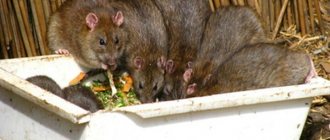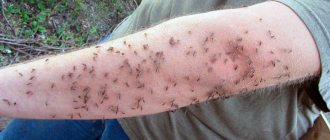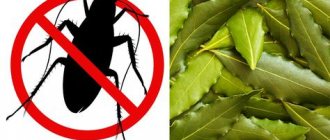The mole cricket insect is also known as the cabbage fly. This is a common garden and vegetable pest. It lives mainly underground, making moves in the ground. The layer of soil protects the mole cricket from cold and other unfavorable factors, so the insect has a long lifespan and is not easy to breed. The insect feeds on various parts of plants, destroying crops and disfiguring lawns. Therefore, many summer residents are interested in how to get rid of mole crickets in the garden forever. You can cope with the pest using effective chemicals, as well as proven folk remedies.
How to detect presence
Before destroying a harmful insect, it is necessary to accurately determine its presence in the garden. This can be done based on characteristic signs that are visible upon careful inspection of the territory.
The main signs of the appearance of a mole cricket:
- a constant increase in the number of wilted plants;
- small mounds on the beds;
- small holes in the ground;
- eggs or larvae (can be found while digging up soil or planting plants);
- characteristic sound at night (resembles the chirping of a grasshopper).
Harm from the mole cricket
This insect is beneficial for nature - it plows the soil, but for your site it is a complete loss of harvest. Starting in spring, it destroys planted seeds, roots of young seedlings, and root crops.
Reasons for appearance:
- The harmful insect appears mainly in manure heaps.
- It can be brought along with black soil.
- Moves from neighboring gardens.
- The desired place of residence is in areas near reservoirs and water pipes.
Appearance of the pest
The mole cricket is a large garden pest, so it will be difficult to confuse it with any other creature. You can recognize this representative of the fauna by 10 features of its appearance.
These include:
- size 4–5 cm;
- on the small head of the mole cricket there are antennae, eyes, mouth and tentacles;
- abdomen approximately 3 times longer than cephalothorax;
- at the end of the body there are paired processes one cm long;
- the forelimbs of the mole crickets are turned inward;
- there are 4–5 sharp spines on the hind legs;
- the length of the fine-scaled wings exceeds the size of the body;
- the limbs are colored brown, and all other parts of the body are brown.
Interesting! Mole crickets can not only fly well, but also swim. Read the article here for lifestyle and ways to deal with mole crickets.
Chemicals to combat mole crickets
To remove mole crickets, you can use not only folk remedies, but also chemicals. The most popular are “Bankol”, “Rubit”, “Regent”, “Medvetox”.
All drugs are insecticides that suppress signals from the central nervous system. Thanks to the action of the drug, the insect first stops motor activity, and then dies within 2-3 days.
The toxicity of the drugs is minimal; they have no effect on birds and animals. The effectiveness of the products occurs at temperatures up to 35 degrees.
What harm does
The mole cricket is the main enemy of gardeners. This large shrew spends most of its life underground. Because of this, its presence can only be noticed after several weeks. During this time, she will have time to lay eggs and destroy a significant part of the crop.
Damage caused:
- eats the roots of onions, bell peppers, carrots, cucumbers, tomatoes, peas;
- quickly destroys the underground part of potato, strawberry and strawberry bushes;
- while digging tunnels, the mole cricket damages the roots of flowers;
- lays eggs, from which constantly hungry larvae emerge.
Chemical control
The most effective way to remove mole crickets from the territory of the dacha is to use various chemicals. These substances will quickly destroy most of the uninvited guests and will not cause harm to garden crops.
"Medvetox"
You can drive out a mole cricket with this drug in just a few hours. In this case, the effect of treating the beds will be noticeable over the next two weeks. The product is red granules that do not harm beneficial insects (for example, earthworms) and do not affect soil fertility.
Mode of application:
- Using any gardening tool, make grooves in the beds no more than 5 cm deep.
- Granules of the substance are placed in them.
- The product is instilled.
"Antimedvedka"
With the help of this chemical it is easy to poison not only the mole cricket, but also many other underground inhabitants. The product is produced in the form of granules or microgranules, packaged in convenient bags. One package of the substance will be enough to protect an area of 15 acres.
Algorithm of actions:
- When sowing or planting garden crops, leave a little space between the rows.
- In these free areas, grooves are made with a shovel.
- “Antimedvedka” is poured into them and buried.
"Medvecid"
This substance is produced in bags of 100 g. This amount of poison is enough to destroy all cabbage mushrooms on an area of 10 acres. The method of using Medvecid is similar to that used for Medvetox.
Important Features:
- the depth of the grooves should not exceed 3 cm;
- the optimal distance between chemical deposits is a meter;
- 5 to 10 granules should be placed in one groove.
"Phenaxin Plus"
Using this drug, you can quickly get rid of mole crickets on the site and prevent its appearance in the future. "Phenaxin Plus" is made in the form of granules that have a specific taste and aroma. Having swallowed the poison, the beetle quickly dies.
Procedure:
- Granules of the substance are placed in pre-prepared grooves.
- Plant seedlings and sow seeds.
- As soon as the first shoots appear, the grooves are torn and refilled with granules.
"Rembek"
This insecticide has a pungent odor that attracts the attention of mole crickets. After swallowing the poison, it immediately begins to act, which leads to the death of the creature. One package of the drug is enough to treat an area of 15 acres.
“Rembek” is laid out in open passages and found holes. At the same time, they try not to destroy the tunnels dug by pests.
"Boverin"
If there is a mole cricket in your garden, then Boverin will help you deal with it. The product contains spores of the muscardine fungus. When a pest gets on the body, they quickly germinate and penetrate inside. This leads to the death of the creature.
You need to treat your garden with Boverin once every two weeks. In this case, the substance must be applied to the soil, trying to prevent it from getting on the seedlings.
"Thunder"
This poison is available in granular form. It contains diazinon (the active ingredient), as well as several attractants that force the insect to feast on the poisonous bait. Once in the body of a mole cricket, “Thunder” paralyzes it, which leads to death.
The product is applied in the traditional way, which involves burying granules in the ground.
"Grizzly"
"Grizzly" is an improved analogue of "Thunder". It contains the same components, but in different proportions. Thanks to this, the product allows you to get rid of mole crickets in the garden and forget about its existence forever.
"Bankol"
To quickly expel mole crickets from your summer cottage, you should use Banakol. This drug, which has a paralytic effect, is produced in powder form.
Mode of application:
- The powder is diluted with water in the proportions specified by the manufacturer.
- The resulting suspension is mixed with grain bait. For maximum effect, you need to take 10 g of the substance for every kilogram of grain.
- Most of the finished product is buried in the ground, and the remainder is distributed over the surface.
"Beargon"
This granular substance exterminates not only mole crickets, but also many other pests (for example, wireworms or ants). The main advantage of the product is its double action. Thanks to this, the insect will die not only after eating Medvegon granules, but also upon contact with them. The product is used sparingly, so 20 g is enough to treat an area of 10 acres.
"Aktara 25 WG"
"Aktara" is a modern insecticide characterized by instant action and high efficiency. After treating the area with the drug, 15 minutes is enough for most of the insects to become poisoned. Other advantages include a long period of protection for the garden (up to two months) and a wide spectrum of action.
Despite its effectiveness, Aktara 25 WG does not harm crops. You need to spray the beds with it before planting any vegetables. Before use, be sure to dilute the product package in 10 liters of water.
"Prestige 290 FS"
This German insecticide has systemic and contact action. Its characteristics are similar to Aktara. The difference lies in the need to apply the product two weeks before planting the plants in the ground.
"Nemabakt"
This effective biological agent acts on mole cricket larvae. It contains bacteria that penetrate inside the creature and multiply quickly there. As the microorganisms grow, they eat their prey.
How to deal with mole crickets in the garden
Ways to fight
You can tell that mole crickets live on the site by the small mounds of peculiarly rolled lumps of soil on its surface, which are especially noticeable after rain. The greatest activity of these insects can be observed in May, when mole crickets crawl out of the already warmed ground. It is at this time that shallow holes should be dug in the area and filled with chopped straw or fresh manure. Mole crickets will crawl into holes to lay eggs so that the hatching larvae can feed on manure or straw. After 3-4 weeks, the contents of the traps along with the larvae are removed and burned.
In order to destroy this dangerous insect, it is necessary to find all the mole cricket nests. Since they are not located very deep, they can be discovered when digging. The nests are carefully dug up, placed in a bucket and then destroyed. Try to do this so that the female does not come to the surface. Take the pesticide and spread its granules in all the passages leading from the nest - this way you will destroy the female as well.
There is another way to get rid of mole crickets. Once you locate the nest, fill it with soapy water so that it fills all the passages dug by the insects. The soap solution will kill both the larvae and the female if she is in one of the passages. If she is not there, be prepared for the fact that after a while the female will again make a nest in the same place and lay eggs in it.
The soap solution is prepared as follows: 10 g of grated laundry soap and 50 g of washing powder are dissolved in a bucket of water. Instead of a soap solution to fill the passages, you can use water with vegetable oil - stir a tablespoon of oil in 4 liters of water - or water with kerosene - 100 g of kerosene per bucket of water at the rate of 30 g of solution for each hole.
If you discovered mole crickets towards the end of the growing season, wait until autumn and, at a soil temperature of at least 8 ºC, dig trapping holes 50-60 cm deep, line the bottom and walls of the holes with plastic film, fill them with manure that has begun to rot and cover with an improvised lid. As soon as stable frosts set in, remove the manure from the pits along with the mole crickets that have crawled into a warm shelter for the winter, and scatter them around the area. The mole crickets will die from frost, because even at a temperature of +5 ºC they become inactive.
- Pests of lilies and methods of dealing with them
Remedies and preparations for mole crickets
The fight against mole crickets in the garden is also carried out with pesticides, however, chemical preparations for mole crickets are used only as a last resort, when other methods of control have proven to be ineffective. There are several effective remedies for mole crickets:
- Medvetox is a unique granular preparation that has an attractive taste for insects and a killer effect. To die, a mole cricket only needs to eat one pellet;
- Medvedka is one of the most effective remedies for mole crickets, which does not have a harmful effect on the environment, which is used in the form of a solution;
- Rubit is an effective and relatively safe remedy for humans against mole crickets in the form of brightly colored granules, which are laid out in passages dug by the pest;
- Thunder - this drug is effective, but contains carcinogens, so it must be used with caution, placing 3-4 granules in the mole cricket’s passages;
- Grizzly - bread-colored granules based on Diazinon, which are used with great care, laid out in the passages dug by the mole cricket;
- Bankol is a low-toxic insecticide of contact-intestinal action for humans, immobilizing the insect, which deprives it of the opportunity to receive food and leads to death after 2-3 days;
- Phenoxin plus - granules with an attractive aroma and taste for the pest, which should be used pointwise, placing several pieces in the passages dug by mole crickets;
- Boverin is a biological drug that causes a fatal disease in mole crickets. The advantage of Boverin is that it is harmless to warm-blooded animals and beneficial insects.
Mechanical removal
You can protect seedlings from mole crickets using mechanical methods. It is best to apply them in the spring, before the immediate planting of cultivated plants, or in late autumn. The second option is considered more effective, as it allows you to destroy most of the beetles.
Work order:
- In the middle or end of November, the garden is dug up.
- The upturned layers of earth will open nests in which mole crickets settle for the winter. Frosty air will quickly kill heat-loving creatures.
- After this, holes about 50 cm deep are dug in several places.
- Fresh manure is placed in them.
- The holes are buried and their location on the site is marked.
- The manure will attract the attention of large mole crickets that will want to spend the winter in it.
- After 1-2 days, they dig up the foul-smelling bait and scatter it around the garden.
- Creatures killed by the cold are collected manually.
Advice! If you add straw to the manure, you can attract many more mole crickets.
Traditional methods
The safest way to get rid of mole crickets is to use one of the folk remedies. In most cases, it contains components of natural origin (compost, sawdust, egg shells, oil, tar, etc.). However, some formulations are prepared based on various available substances (for example, kerosene, soap, lime or ammonia).
Kerosene
This substance has a sharp, unpleasant odor, so it can only be used to kill mole crickets in open spaces. This method is not suitable for a greenhouse.
Correct sequence of actions:
- Pour 10 liters of cold water into a large bucket.
- Add ½ cup of kerosene to it.
- The components are thoroughly mixed and left for 3-4 hours.
- In the evening, pour 35–45 ml of the prepared composition into the holes.
- In the morning, dry sand and 30 ml of kerosene are mixed in a bucket.
- The resulting mass is scattered between the beds.
Soapy water
Treating your garden with soapy water is quite simple. To do this, you need to prepare a piece of laundry soap in advance. An alternative is laundry detergent that does not contain phosphates or fragrances.
Algorithm of actions:
- Rub 10 g of laundry soap into a bucket.
- The container is filled with 10 liters of water.
- The ingredients are mixed until the soap is completely dissolved.
- The mixture is divided into 500 ml portions.
- Each of them is poured into a separate hole.
- Saving its life, the mole cricket will climb to the surface, where it can be easily caught.
Advice! Even if soapy water does not lure adult mole crickets out of their burrows, you should not stop working. In any case, there is a high probability that the solution will destroy the eggs or larvae.
Eggshell
A good way to remove mole crickets from garden beds is to use dried shells left over from a used chicken egg. To prepare an effective folk remedy, you will also need a little sunflower oil.
Step-by-step instruction:
- The shells are laid out on the windowsill or left in a sunny place in the summer cottage.
- After one or two days, this component is placed in a mortar and ground to a powder.
- A few drops of sunflower oil are added to the crushed shells.
- Furrows 3–4 cm deep are made in the beds.
- The prepared product is placed in them.
- The holes are buried.
- The mole cricket, attracted by the smell of oil, eats the shell.
- It injures the mole cricket’s internal organs, which leads to its death.
"Karbofos"
"Karbofos" is a broad-spectrum insecticide. If you properly treat your home garden with it, you can quickly get rid of many pests. It is recommended to use it not in its pure form, but as part of a folk remedy.
It is prepared in the following way:
- kg of grain is poured into a deep container.
- It is mixed with 50 g of insecticide.
- The mixture is poured with 30 ml of sunflower oil.
- The finished poisonous bait is buried in the places where minks and underground passages of mole crickets are found.
"Karbofos" should be used with caution, since it can poison not only mole crickets, but also domestic animals or wild birds.
Calcium carbide
Calcium carbide is a white crystalline substance. It is produced by heating calcium oxide and coke. The substance is widely used not only in industry, but also in households. It is used to exterminate mole crickets and other beetles.
The method of using calcium carbide is to pour crystals of the substance into burrows. When you subsequently water the beds, the water will come into contact with the carbide. As a result of their interaction, acetylene, harmful to insects, will begin to be released.
How to cook sea bear?
This type of shrimp can be prepared in quite standard ways - boiled or fried. Only the process of cooking sea mole crickets takes a longer time - at least thirty minutes, especially if they are large shrimp.
And you don’t have to change the frying process and follow the traditional recipe for preparing the delicacy. It is enough to fry the bear in vegetable oil, adding a little soy sauce and garlic to the dish.
But, in addition to the standard processes for preparing snacks from this seafood, there is also the option of creating a real culinary masterpiece. This is what we will talk about in the next section.
Traps
There are many types of traps that can be used to easily catch various harmful creatures, including mole crickets. In most cases, they are installed in the summer or before spring weeding.
How to use the most effective trap:
- A hole is dug in the garden bed, 15–20 cm deep.
- A plastic bottle (for example, made of polycarbonate) is placed in it.
- The container is buried, leaving a neck on the surface, which should be flush with the ground.
- 100 ml of sugar syrup, beer or honey dissolved in water is poured into the bottle.
- The bait will attract mole crickets, which will penetrate inside the container.
- They will not be able to get out of the trap.
Traps for mole crickets
The main advantage of various mole cricket traps is their long-lasting action. They will be valid for one to two weeks after installation. Taking into account numerous reviews from summer residents, a list of the most effective and efficient traps for mole crickets was compiled:
- Glass trap . The principle of operation of this ambush is to place a transparent container in the path of the pest. Find a dug tunnel through which the mole cricket moves, dig a jar into it. There is a high probability that, moving along the usual path, the insect will fall into a jar from which it will not be able to get out. If you pour a little water into the jar, the humidity will further lure the pest.
- Trap using honey . A plastic or glass container is dug into the ground. Its walls are coated with honey from the inside. Its sweet aroma will attract the mole cricket, which will definitely try to climb into the container to feast on it.
- Beer trap. Pour about one hundred grams of fresh beer into the bottle. Dig the container into the ground on a slope. Try to keep the neck of the bottle from touching the ground. Cover it with a piece of tile or a sheet of iron. The beer aroma will not leave the bear indifferent. After a week, the bottle is removed, and the insects that get into it are destroyed. After pouring new beer, the container can be replaced.
- Manure trap. For wintering, the mole cricket looks for a warm place. Manure mixed with straw is an ideal place for this. Dig several holes in the area, filling them with manure. Before frost, the manure must be taken out and burned. This way you can get rid of not only adults, but also a huge number of larvae.
- Eggshell bait . Moisten the crushed shells with unrefined oil. The fragrant bait is placed in all furrows and holes where seedlings and seeds are placed. Such a poison will definitely attract the attention of the pest. Uneaten shells will become good fertilizer.
( Video : “I make mole cricket traps and I don’t have one”)
Protective rings and barriers
One of the most effective methods involves installing a protective fence. It is made from a plastic bottle, the bottom and neck of which are cut off. The remaining part of the container is deepened into the ground around the shoots. The mole cricket will not be able to chew through the plastic ring or crawl under it.
Plants that repel mole crickets:
Kapusyanka does not like all smells. Gardeners often use this feature to protect their crops.
Marigold
These beautiful and pleasantly smelling flowers are an effective mole cricket repeller. The aroma coming from the buds makes them fly around the garden and look for places with more favorable conditions.
To completely protect your garden plot from harmful insects, it is enough to plant marigolds along its entire perimeter.
Chrysanthemums
To save crops from mole crickets, it is not necessary to poison or kill it. It is enough to take several dozen chrysanthemum branches and dig them into the ground. The smell will repel beetles and protect the planted plants.
Coriander
The real way to drive mole crickets out of the garden involves planting coriander. It will not only protect the area, but can also be used in cooking. The roots and seeds of coriander are used as a seasoning, and the leaves are used to decorate various dishes.
Garlic
If you do not want to poison mole crickets with chemicals, then you will have to save the seedlings using alternative methods. One of the most effective is considered to be planting garlic. Its smell repels many beetles, preventing them from spoiling the crops. If it is not possible to plant garlic, then you can lay out its husks in various parts of the garden.
Onion
It does not kill mole crickets, but effectively copes with their invasion. The principle of action of onions is the same as that of garlic. The gardener can independently choose one of two options:
- planting onions;
- laying out the husks.
How to store a mole cricket for fishing
It is better to store insects in a dark and cool place, but no more than 2-3 days, as the mole crickets will begin to eat each other. For longer storage, it is better to place them in several boxes so that each contains several insects. If normal conditions are created, the bear can be stored for a month.
For storage, it is better to use a spacious box with ventilation holes the size of about 8 matchboxes. Small wet sawdust is placed at the bottom of this box. You can feed the mole cricket with herb roots.
Tips to prevent recurrence
Preventing a problem from occurring is much easier than fighting it. Because of this, experienced gardeners recommend regular preventive measures. These include:
- spring and autumn digging of soil;
- weed control;
- summer treatment of the beds with protective agents;
- removal of plant residues after harvesting;
- compliance with watering rules;
- periodic treatment of plants with insecticides.
15 of the best remedies in the fight against mole crickets
Fighting a mole cricket is a difficult task. To successfully cope with the task, it is necessary to find an effective folk or chemical remedy, and also take into account the recommendations of experienced gardeners. If you avoid serious mistakes, you can get rid of the pest and prevent its reappearance.
LiveInternetLiveInternet
Quote from Galimax
Read in full In your quotation book or community!
There is control over the bear!
A large number of chemical means of combating mole crickets are for the most part not as effective as manufacturers promise.
Therefore, people have to try various folk methods, of which there are quite a few. When faced with such a tenacious and omnivorous pest, it is desirable to have a remedy that will be effective even with the first and only use.
Medvedka loves gardeners who manure their plots well and water them regularly. The mole cricket insect attacks both above-ground parts of plants, as well as roots, root crops and even sown seeds. All vegetable crops (except garlic) and strawberries make up the mole cricket’s diet
You can fight mole crickets with peas:
* 1 kg of pea halves (namely halves);
* Remedy for the Colorado potato beetle (Fury, Aktara, Antizhuk, Decis, Confidor, etc.); * 1 liter of water. Dilute the remedy for the Colorado potato beetle in 1 liter of water, and then soak the pea halves in the solution. The peas must stand in the solution for at least 12 hours, then the halves will absorb the prepared mixture well and acquire the strength we need. Afterwards, all that remains is to scatter the halves around the garden or area where the unwanted guest was noticed. Important! Use this method during spring plowing. It is necessary that the halves end up in the ground at a depth of 15 centimeters. Why halves? Use only halves of peas, as the halves lose their ability to germinate and remain in the soil for a long time, thereby continuing their invisible battle with the mole cricket throughout the season.
And one more thing: The pea method is very effective. Only I used wheat instead of peas. The number of pests has decreased. But we still protect the seedlings with plastic.
And also a fish way to fight mole crickets, without chemicals.
The method of control is that it turns out that the insect cannot stand the smell of rotten fish. When planting seedlings of cucumbers, tomatoes, cabbage, you need to put a few pieces of the cheapest fish in the hole. Even the head, bones and scales will do. The fish quickly rots, and the mole cricket avoids this place. Along the edges of the beds with carrots, beets, and green crops, I lay out pieces of fish and lightly sprinkle them with earth. While the seeds are germinating, the fish begins to deteriorate, and this smell prevents the pest from destroying the young seedlings. It is advisable to add fish during the entire period of insect activity until harvest. Or instead of fish, garlic is placed in the hole. One clove is enough. Of course, it is better to add new cloves several times during the season, but this is very easy to do.
Another new bread recipe for fighting mole crickets
In the old days there were no “poisons”, and the peasants somehow still saved their harvest.
In the fight against the mole cricket, I tried a lot: plastic rings, fabric, eggshells, and fish - all to no avail. When planting, they put sprat along with the potato tubers - it didn’t help. Plastic and fabric for a mole cricket are just a kind of fence that it easily overcomes. The neighbors took a different route: they installed rattles, but the effect was also short-lived. I had to replant the seedlings 2-3 times to new places. Last year I was advised a new way to fight, and it really turned out to be effective. In early spring, when the mole cricket is already looking for food for itself, and nothing is growing in the garden yet, I feed it with a special “treat”. I soak pieces of stale bread in this mixture: - to 1 liter of water add 1 packet of any insecticide, 1 packet or ampoule of Wofatox and 2-3 tsp. vegetable oil. Then I lower the bread into each hole along with seedlings or potato tubers. The result is excellent!!! Last summer I didn’t replant anything and was left with the harvest. Planted 2 buckets of potatoes - harvested 20! And no news from the pest. Doubts about the method? Check it out for yourself.
The easiest way to protect yourself is with Alder.
Stick several thin alder twigs around each seedling to a depth of 10-12 cm around the perimeter.
Alder is an insecticidal plant and repels mole cricket well; as it dries out, the twigs need to be changed.
You need to plant a flower along the borders of the plot - marigolds, it is unpretentious, has a specific aroma, and will reliably protect your garden from the encroachments of the mole cricket.
Bear loves beer!
Oddly enough, but a fairly effective means of combating mole crickets is... beer! The bait is prepared as follows.
Thoroughly wash several glass bottles and pour 100-150 g of fresh beer into each of them. Bury the bottles in different places in a slightly inclined position with the neck up, as shown in the figure, while the neck should be slightly higher than the ground and not touch it.
Cover the trap site with a piece of iron or old tile. Since the mole cricket is attracted to damp places, water the ground around the traps with a small amount of water from time to time, but do not allow puddles to form and make sure that the water does not get into the bottle. It is advisable to plug the neck with something before watering it.
After 6-10 days the bottle can be dug up. Pests, having penetrated it, cannot get back out along the slippery glass surface. Then, having gotten rid of the insects that came across, you can replace the beer in the trap and install it again in places where mole crickets accumulate. One such trap is quite enough for 4 m2 of area. Catching mole crickets in this way can begin with the first work on the site and end just before frost.
In the fall, before frosts, in places where there is a large concentration of mole crickets, dig several holes in a checkerboard pattern at a distance of about half a meter from each other, put horse manure in them, pour a pile of earth on top and mark them with pegs. With the onset of severe cold, open the holes and scatter the manure over the snow. Large numbers of pests hiding there for the winter will die from frost.
Fighting Medvedka with plastic bottles
And we fight mole crickets like this: we cut plastic bottles into 2 wide rings, insert them into the ground so that the seedling bush is inside the ring. The neck and bottom must be cut off. A kind of flower bed is formed. The mole cricket crawls up to the plant, rests against the plastic and goes around it.
We save up to 90% of seedlings. I would like to share a good way to get rid of the voracious mole cricket: Grind the eggshells and mix them with vegetable oil. This mixture should be placed in the passages dug by the mole cricket or in holes with plants. You will see the result.
And some people advise eating mole cricket...
You need to eat it! And don't fight her
By the way: Medvedka has been used to treat tuberculosis since ancient times.
They say that recovery occurs in 90% of cases. And this is not a joke, this is traditional medicine!
If you are seriously ill, you will probably eat more than just mole crickets to get better.
So, it’s better not to get sick!
An adult mole cricket has a dark brown body 3-5 cm long and small wings.
During the mating period, the mole cricket is capable of flying long distances. The mole cricket is adapted to an underground lifestyle.
The mole cricket overwinters in the soil at a depth of 70-80 cm. When the weather becomes warm, the mole cricket makes horizontal passages at a depth of 3-5 cm.
The presence of mole crickets on the site can be recognized by drying plants, small mounds, vertical passages 10-15 cm deep and the ground trail from their underground tunnels.
Agrotechnical methods of combating mole crickets:
- Loosening the row spacing to a depth of 10 cm throughout the mole cricket’s entire egg-laying period, to destroy the mole cricket’s passages and destroy the eggs.
- Refusal to fertilize plants with fresh mullein in areas where mole crickets live.
- Watering the ground with chicken manure infusion in dry weather to repel mole crickets.
- Planting marigolds around the perimeter of the plot; the mole cricket cannot stand their smell.
- Setting up mole cricket traps in the fall at soil temperatures above +9ºC. Per hundred square meters, they dig two holes 60 cm deep, put manure in them, which is scattered when stable frosts occur.
Chemical methods of combating mole crickets based on the State catalog of pesticides approved for use on the territory of the Russian Federation in 2011:
- Application to the soil during the growing season to a depth of 3-5 cm of the preparations Grom (30 g / 10 m²) and Phenaxin plus (100 g / 10 m²) - vegetable and flower crops, strawberries, potatoes, Grizzly (20 g / 10 m²) are allowed for use - flower crops are allowed for use, Medvetox (3 g/m²) – flower crops and potatoes are allowed for use. Entry period for the treated area for manual work is 7 days
- Baits based on Bankol - vegetables, flowers, strawberries, and potatoes are allowed for use. To prepare 1 kg of bait you need 10 grams of Bankol, 800 grams of wheat bran, 50-100 grams of water, 50 grams of molasses (50 grams of sunflower oil). Bait consumption is 1 kg per 100 m².
How to fight the Colorado potato beetle in spring.
Preventive measures in the fight against currant pests.
Tips from experienced pest control experts.
Galimax for you
from here
Series of messages “Fighting pests, diseases and weeds”:
Part 1 - Environmentally friendly means against garden pests Part 2 - Pest control without chemicals ... Part 33 - Cherry pests Part 34 - Ants are the most effective methods of control Part 35 - There is a mole cricket government! Part 36 - Burdock weed and medicine Part 37 - Weeds and alcohol Part 38 - Personal safety rules when working with plant preparations Part 39 - Saving drowning people is the work of the drowning people themselves... Part 40 - Plants against garden pests - 2











